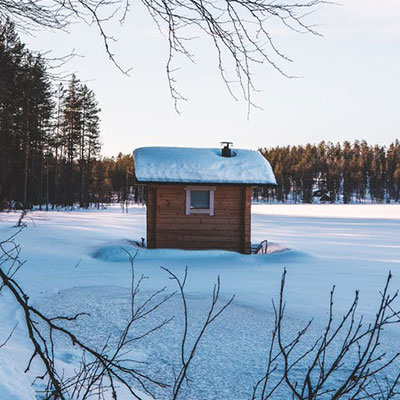
One of our many tasks for the autumn is getting the garden ready for the long winter months ahead; a major task is protecting your garden shed from the elements. Some garden sheds may need this more than others, for example if it is an old shed or there have been bad storms or unusually inclement weather conditions. This guide will help both those who are not familiar with having a garden shed, and those who have had a shed for a while and need some extra advice.
Old sheds
If you have inherited a shed with your new home, you may not realise the importance of protecting it from the cold weather over the wintertime. Wet winters can cause a lot of damage to your shed and even though they will most likely have been treated at some point, old garden sheds will greatly benefit from a coat of paint. Without this extra care and attention, you could end up having to replace the shed much earlier than necessary. It is better to be on the side of caution if you do not know when it was last painted, then give it an extra coat or two of wood treatment. Different types of sheds can have more problems than others in the winter, for example tongue and groove sheds are better than standard overlap constructed sheds at keeping the pesky wind and water out.
How to paint your garden shed for winter
There are many types of shed paint and they now come in some amazing shades, so no need to just stick with brown! Paint your shed to brighten up your garden or to match garden furniture. To paint the exterior of your shed, it is best to choose a good weather snap, before the weather turns, which can be any time knowing our winters! Wash down the shed, and remove loose dirt and muck beforehand. Then go over the shed’s surface with wire wool, this process will help the new coat of paint soak into the wood.
Check your shed - inside and out
New sheds will still need to be looked at for the winter, just as an added precaution.
- Loosen your sheds joints each autumn, this could help prevent damage, but remember to tighten them again when the warmer weather returns in spring.
- Look over your shed to check all parts, because it is quite surprising how the cold winter months can take you unaware.
- Check your roofing felt and gutters, if they are blocked this can cause a lot of problems both inside the shed and in terms of the wood rotting. If the felt is damaged, either repair it or replace it, this is still much cheaper than having to purchase a new shed. Even small holes or tears can be a nuisance to your poor shed; so best to tackle it while the weather is still relatively good.
- It will only take a short time to clear out old leaves and rubbish from the gutters. If there are no gutters, it is best to add them so water can run away from the shed’s surface over the winter-time. Guttering kits can easily be bought and installed.
- Do not forget to check shed windows before winter; you can use some silicone sealant to prevent water from penetrating.
- Winds can also damage your shed in winter, so again it is worth spending some time on each area of your shed.
- The shed door and any metal fixings are important too, rust proof them with WD-40 and make sure they fit and do not have any rotten parts, missing screws or bolts.
- It is best to avoid piling up things against the sides of the shed or hanging large items from the ceiling; these can weaken the shed, especially when the weather in winter is so changeable.
- If snow gathers on your shed roof, clear it as soon as possible, as the weight can be detrimental to the shed’s structure.
- Metal sheds also need to be cared for, and you can paint them with suitable paint.
Organising equipment in sheds for winter
A shed often has a lot of costly gardening tools and equipment, so preserving them is crucial. Make sure items are clean and wipe over with an oily cloth, this is good for metal surfaces, to help stop rust. Any electrical equipment should not be stored directly on the shed floor, and instead they should be sitting off the ground or in plastic boxes. You can install hooks on walls too for smaller items.
Although there are many tasks to help prepare your shed for winter, these will go some way to prevent damage and loss.
Take a look at our range of garden sheds:
